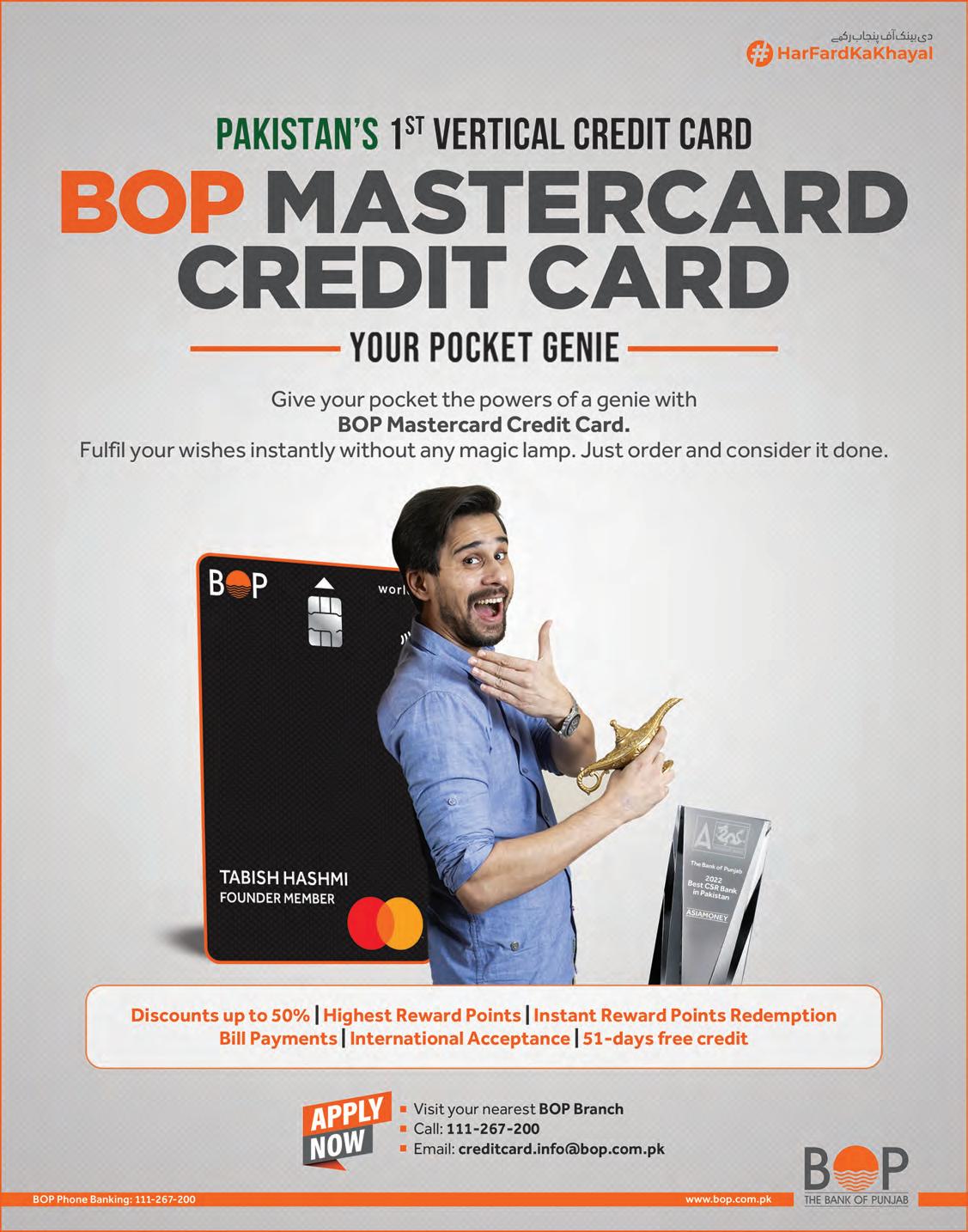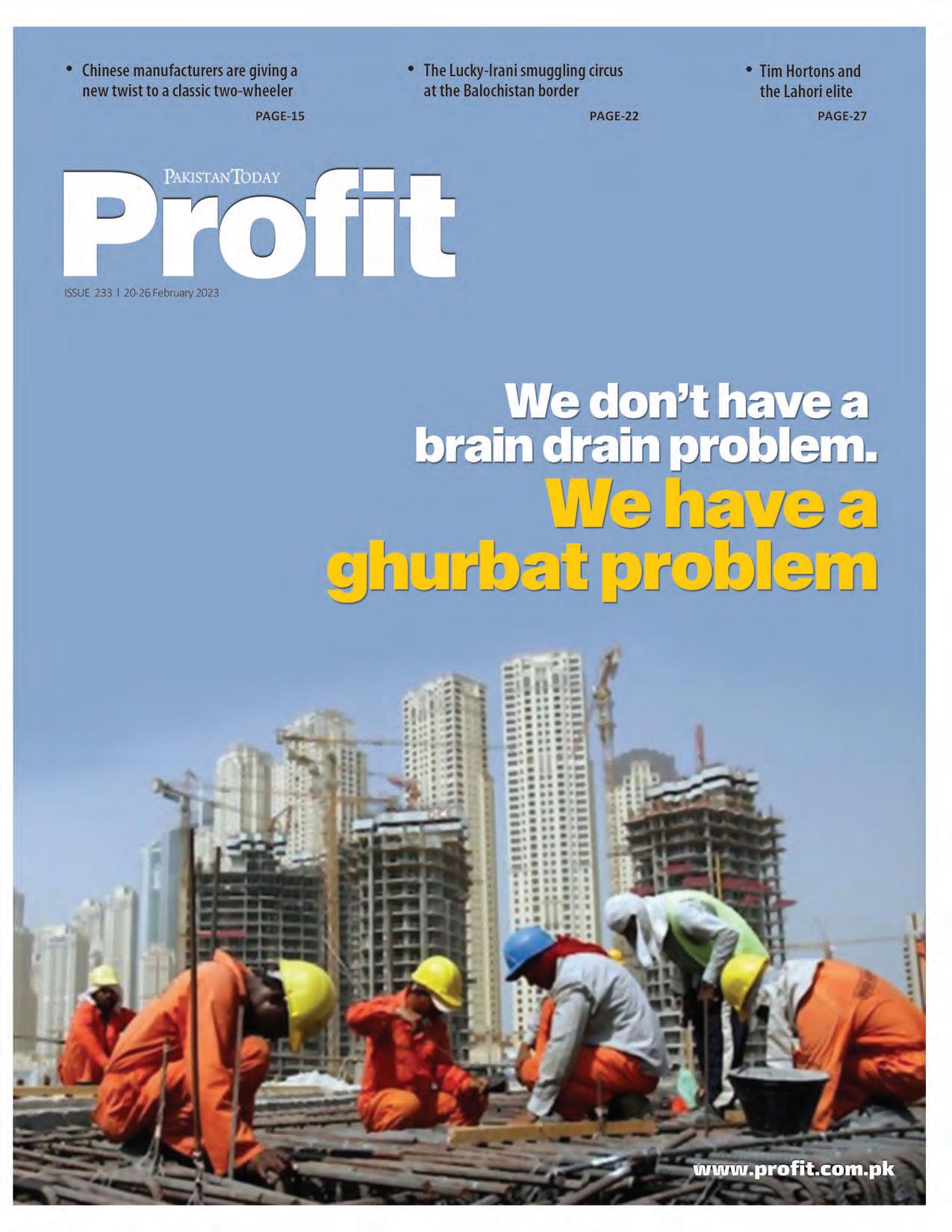

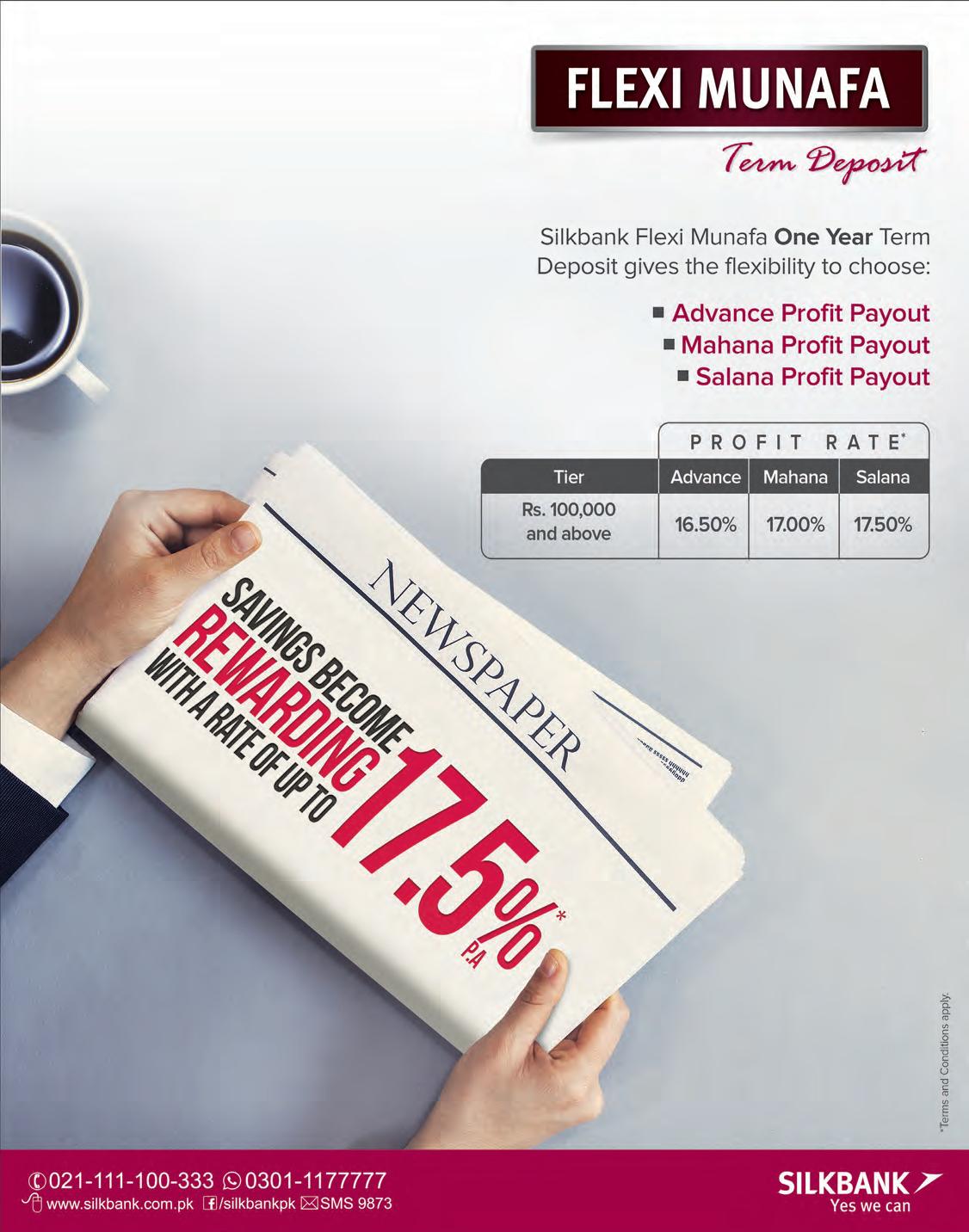
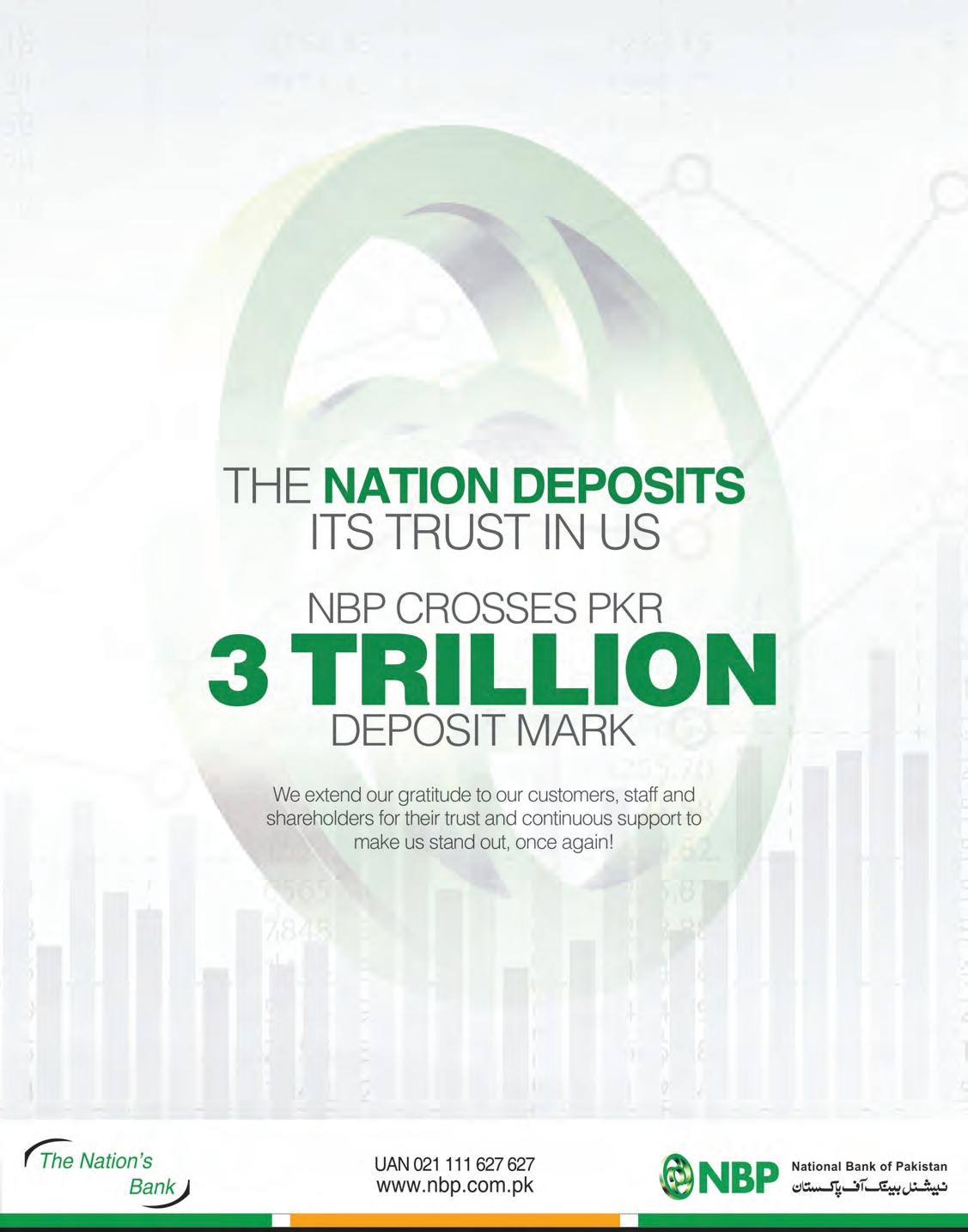
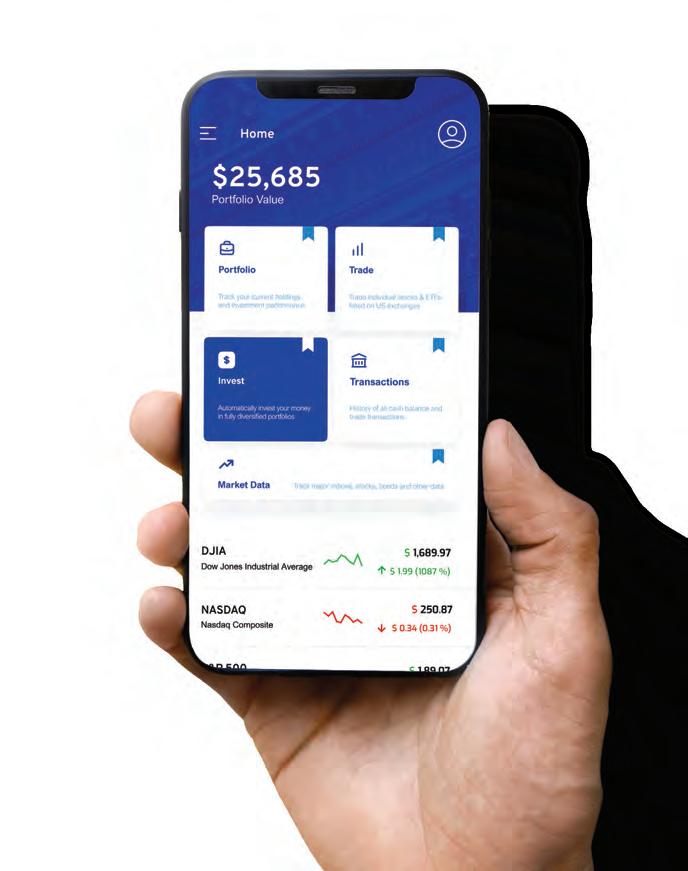







08
08 We don’t have a brain drain problem. We have a ghurbat problem
13
13 How depositors lose out on Islamic savings accounts Ammar H Khan
15 Chinese manufacturers are giving a new twist to a classic two-wheeler

22
22 The Lucky-Irani smuggling circus at the Balochistan border

27 Tim Hortons and the Lahori elite
Publishing Editor: Babar Nizami - Joint Editor: Yousaf Nizami
Senior Editors: Abdullah Niazi I Sabina Qazi
Chief of Staff & Product Manager: Muhammad Faran Bukhari I Assistant Editor: Momina Ashraf
Editor Multimedia: Umar Aziz - Video Editors: Talha Farooqi I Fawad Shakeel

Reporters: Ariba Shahid I Taimoor Hassan l Shahab Omer l Ghulam Abbass l Ahmad Ahmadani l Muhammad Raafay Khan
Shehzad Paracha l Aziz Buneri | Daniyal Ahmad | Ahtasam Ahmad | Asad Kamran l Shahnawaz Ali l Noor Bakht l Nisma Riaz
Regional Heads of Marketing: Mudassir Alam (Khi) | Zufiqar Butt (Lhe) | Malik Israr (Isb)
Business, Economic & Financial news by 'Pakistan Today'
Contact: profit@pakistantoday.com.pk


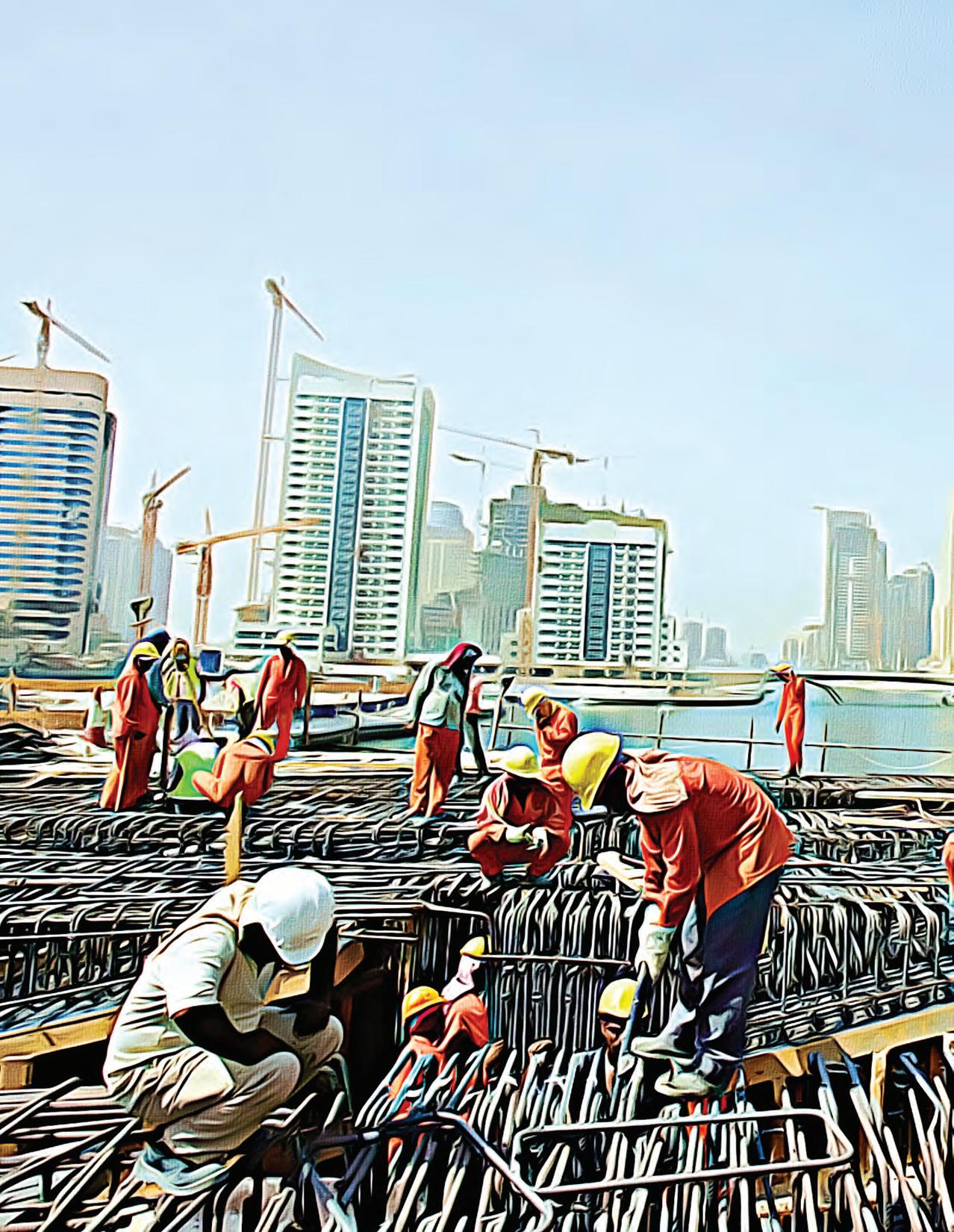
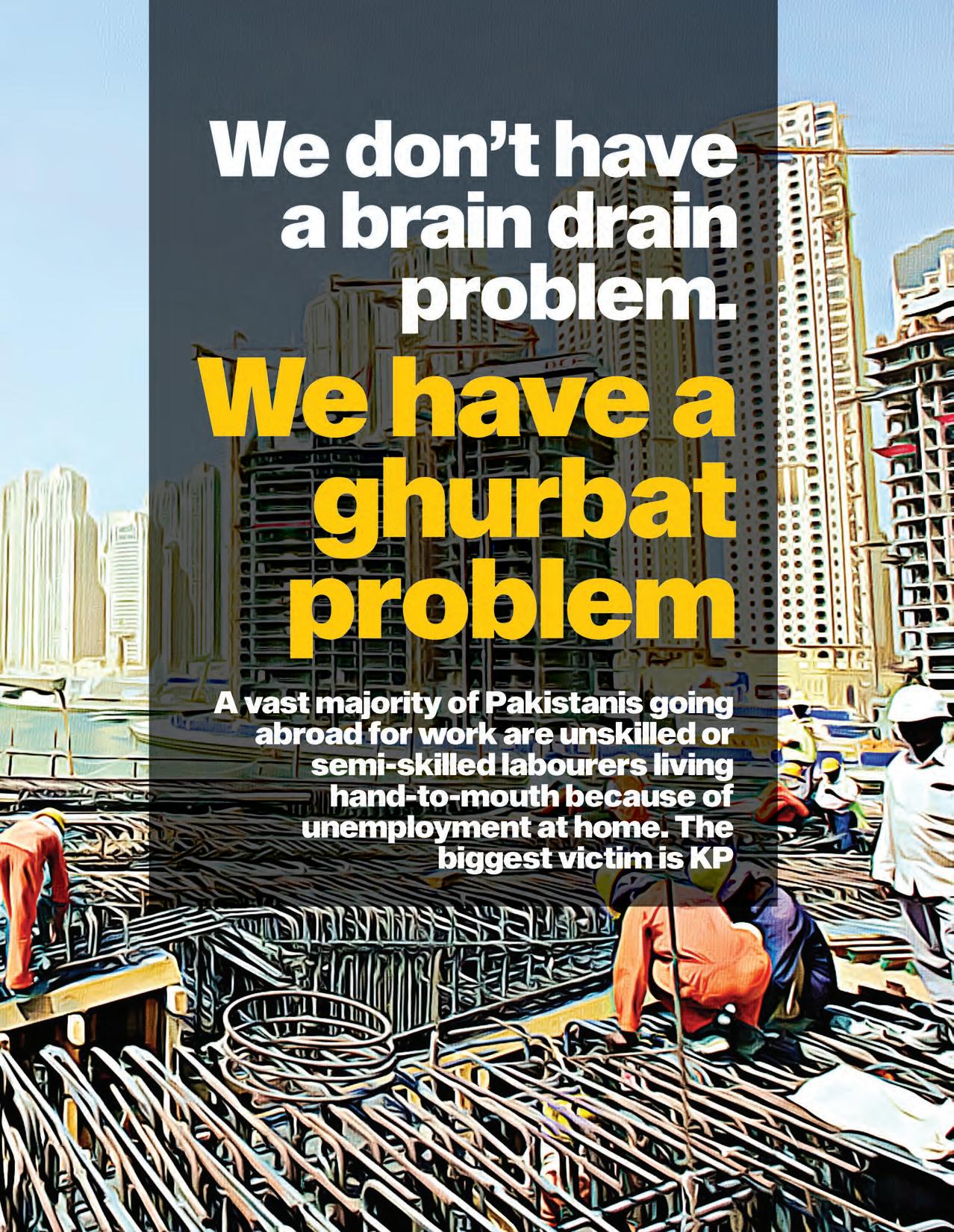
In December 2022 a figure released by Pakistan’s Bureau of Immigration became the centre of media attention. According to the bureau, more than 832,339 people registered abroad for employment last year. That marks a more than 300% increase in the number of Pakistanis leaving the country to find greener pastures abroad.
In a country teetering dangerously close to default, the term looming over our economy like an ominous cloud was ‘brain drain’ — an economic phenomenon where highly educated individuals from developing countries go to already developed countries to find better compensation for their services as well as better living and working conditions.
The reality of our problem is quite different. Of the 832,339 people that migrated from Pakistan for work, only around 92,000 were doctors, engineers, IT specialists, accountants, and other ‘highly skilled’ workers. The rest were mostly travelling to the Gulf to work as labourers, masons, drivers, and other blue-collar positions. That more than anything points towards a different problem: poverty.
Most of the people leaving Pakistan are not going to find some version of the American Dream. They are going simply because they cannot find employment in Pakistan. They go to Gulf countries, live in putrid conditions far away from their friends and families only to make minimum wage and send back meagre
amounts of money to Pakistan so their families can have the bare necessities of life.
There is perhaps no better example of this than in Khyber Pakhtunkwa. Out of the 832,339 Pakistanis that left in 2022, 55% of the people come from Punjab and 32% from Khyber Pakhtunkhwa. This is despite the fact that KP only constitutes 18% of the entire population of Pakistan which means they are providing almost twice the number of migrant workers abroad in terms of their population. And while governments may point towards remittances and the boons of having a large overseas population, the equation is not quite so simple.
The phenomenon of people wanting to leave Pakistan is nothing new. In most English-friendly audiences with a pretence to education that read publications like Profit the rising concern is that the massive number of people immigrating is tell-tale of “brain drain:” a pressing anxiety that Pakistan is losing its bright minds to more lucrative job prospects abroad. While there is some truth to this, the idea of “brain drain” is largely a myth.
Around 80% of the people moving abroad are unskilled or semi skilled labourers struggling to make ends meet at home. According to the Ministry’s report for 2022, out of the 832,339 emigrants, only 1902 were highly quali-

fied and 2777 were highly skilled. In contrast to this, overwhelmingly 24445 were unskilled. According to a recent thought-provoking report by BR research that analysed the numbers that came in when they were first released, the top five employment categories for 2022 are in line with the 10-year average, with ranks unchanged. The unskilled labourer category at 43 percent has the highest share. This is followed by drivers, who are in high demand in 2022 – doubling the 10-year average share from 14 to 28 percent – growing 2.5 times.
“In terms of countries, GCC takes up 96 percent share – led by Saudi Arabia at 62 percent for 2022 and 47 percent between 2011-19. The Emirates continues to be the second preferred destination, but the share has dropped to just 16 percent in 2022 versus 40 percent for the 2011-19 period. Qatar’s share has understandably shot up to 7 percent in 2022, versus an average less than 2 percent share from 2011-19. The numbers are likely to drop significantly as the ongoing World Cup in Qatar draws to a close.”
“Pakistan has a high rate of unemployment. People are simply unable to find work here, especially the unskilled and semi skilled labour force. You’ll mostly find the working classes, employed as basic technicians, electricians, drivers and construction workers abroad. In most cases, they’re working in the

Gulf countries (around 97%)- you’ll barely find such people working in Europe, Canada or the USA,” says Dr Muhammad Saleem, an economist.
“The jobs are not highly salaried there either. You’ll typically find labourers earning PKR 35,000-45,000 per month, which is very less. It’s barely enough to provide for food at home. Most people working in Saudi Arabia earn 600-700 riyals per month. This is hardly equivalent to the minimum wage in Pakistan after deducting the living costs.”
This unmasks the excruciating tragedy that people can’t even make this much for themselves at home. “Alongside this, the living conditions for labourers are gruesome in the Gulf countries. People are cramped in tiny
spaces to save costs,” adds Dr. Saleem.
Taimur Khan Jhagra, the former Provincial Minister of KP for Health and Finance, disagrees with this however. “The working conditions are tough here also. Most people want to get public jobs. However, only 8-10% are able to acquire those. What do the remaining 90% do? If they have access to foreign jobs, that’s actually a huge plus. I would see it as a positive sign.”
KP has a particularly high percentage of people moving abroad for work. KP only constitutes 18% of Pakistan’s population. However, 32% of the labourers travelling for overseas employment come from KP. This is a jarring figure, nearly double its share of Pakistan’s total population.

What is the reason for this?
“There is scant economic activity in the province. The War on Terrorism had wreaked havoc. It hindered the creation of employment opportunities, as a result of which, a large number of people are seeking employment overseas,” explains Jhagra. “KP’s workforce has historically been mobile. This has been the case since the Gulf opened in the 1970s. It increased labour mobility across Pakistan, perhaps more so in KP as the workforce is characterised by dynamism and mobility.”
On the flip side, very few people from interior Sindh and Balochistan are shifting abroad in search of work. Balochistan contributes to 6% of Pakistan’s total population. Yet,
Provinces can’t do much at the end of the day. If an investor wants to build a hotel in KP, sure we’ll facilitate them. However, there is so much red tape in Islamabad. This makes the process extremely cumbersome and arduous. Once you remove the red tape, we’ll happily cooperate in building the hotel
only 1% of Pakistan’s overseas labour force comes from Balochistan.
“Barring Karachi’s muhajir population, labour mobility and dynamism in interior Sindh and Balochistan has remained relatively low. This is in contrast to that of Punjab and KP, where the working classes are more mobile. You’ll even find many Pashtuns working in Karachi. Despite having no connections in the city, they’ll still migrate in the pursuit of better employment opportunities. This is mainly due to cultural reasons. Punjabis and Pashtuns are more prone to migration for economic reasons,” adds Dr. Saleem.
This is where the question of remittances comes in. The common perception is that the foreign migration of labour forces is disastrous for the local economy because of bright minds and capable hands suddenly being fewer in circulation. The real situation is more nuanced than this simplistic worldview. As a matter of fact, the human development statistics from KP indicate that both education and healthcare have been improving over the last two decades.
According to Dr. Saleem, this is predominantly attributed to foreign remittances. “The income levels have slightly improved due to their influx. This has contributed to some local development. After winning the general elections in 2018, the PTI government promised to empower KP. In reality, it doesn’t have anything to do with the rising income levelswhich are mainly credited to foreign remittances. In general also, political governments have not had any substantive role to play in facilitating economic activity in the province.”
Jhagra also elucidates the bright side of this phenomenon.
“This is actually a matter of pride for Pakistan. It has significantly contributed to the local economy in the shape of remittances being returned to the local community. Pakistan owes a debt of gratitude to these workers” asserts Jhagra. “We shouldn’t worry about the proportion of people migrating overseas for work. Rather, the challenge is to upscale them so that they may find work beyond the blue collar jobs.”
“Annual remittances worth PKR 40-50 million come from the Pashtun diaspora alone. As a former minister in the KP government, I would think of strategies to further upscale this population. Even within blue collar jobs, they should ascend to higher levels of pay and eventually enter into the service economy. I have spent many years of my life in the Gulf. Yet I have never walked into Starbucks and seen a Pakistani employee. These workers should eventually make it there.”
“However, this is not to posit that blue collar jobs abroad are not important. They’re
adding considerable value to our economy. Their counterparts here are sitting as clerks in the government. The culture of paper-pushing is rampant in Pakistan.In fact, foreign remittances is one of the few areas wherein Pakistan has some advantage in terms of its population size.”
This nevertheless presents a delicious paradox. On the one hand, foreign remittances substantively contribute to local development. On the other hand, they are productive only because the national economy is unable to sustain the local population. Instead of reaping the benefits of foreign remittances, should the government create more employment opportunities within the country?
“It’s not as simple as that,” exclaims Jhagra, “the moment it becomes disadvantageous to work abroad, people won’t go there. Despite the 18th amendment, the conditions required to foster economic prosperity are not in place. The central government including the bureaucracy is complicit in this. The KP government for example has no comparative advantage in facilitating economic growth. KP produces the bulk of Pakistan’s electricity and gas. Yet, it pays the same rate for electricity and gas as the other provinces.”
*Comparative advantage is when agents have a comparative advantage in producing a particular good at a lower relative marginal cost prior to trade.
“This is true for the supply side as well. Both the transmission and distribution lines of electricity are embedded in Punjab. We are never able to use this comparative advantage, which acts as a disincentive for us. When we raise our voice about this, we are accused of being “separatists.”
Therefore, the real problem lies in how the federal government operates. More precisely, it’s the lack of devolution of power to the provinces. “Provinces can’t do much at the end of the day. If an investor wants to build a hotel in KP, sure we’ll facilitate them. However, there is so much red tape in Islamabad. This makes the process
extremely cumbersome and arduous. Once you remove the red tape, we’ll happily cooperate in building the hotel,” claims Jhagra.
“We constrain the economy when we don’t devolve the integrated power.” Jhagra makes a good point. But the answer is not so simple. The PTI has been in power in KP for nearly a decade now. On top of that, there is another factor. From 2018 to 2022 they were in power at the centre as well, yet there remains a lack of political will to implement local bodies and a true devolution of power across all parties.
“Karachi should be much more developed than it is already. Its population is two-thirds of KP’s total population. The greatest hindrance is the poor government and the city’s lack of control. The wealthy businessmen in Karachi just give speed money and get their work done. The Mayor of Karachi however is not empowered enough to facilitate development in a more democratic sense,” says Jhagra.
Apart from the structural revamping, what else can the government do to find more rewarding alternatives to foreign remittances as a means of uplifting the economy? “What the government can do instead is to figure out ways to increase exports. Until this happens, foreign remittances should be encouraged. If you stop remittances, the balance of trade will aggravate further,” concludes Jhagra.
At this point, Jhagra inserts a key caveat: “While it is important for people to find work abroad, it’s also crucial that we create pathways for those people to eventually return with their acquired skills and contribute to Pakistan’s economy and development.”
“The real hopelessness actually lies elsewhere: it’s with the middle-classes or the upper middle-classes who are trying to move up the social ladder. Due to lack of meritocracy, they tend to move abroad for better employment opportunities. That is where the actual “brain drain” happens. We therefore need to create job opportunities for graduates from local universities such as LUMS, NUST, GIK etc. While these students have degrees, they’re unable to find jobs that match their academic credentials and skill-sets.” n
“Pakistan has a high rate of unemployment. People are simply unable to find work here, especially the unskilled and semi skilled labour force. You’ll mostly find the working classes, employed as basic technicians, electricians, drivers and construction workers abroad. In most cases, they’re working in the Gulf countries (around 97%)- you’ll barely find such people working in Europe, Canada or the USA”
Dr Muhammad Saleem, economist

The increase in interest rates to almost all-time high levels, coupled with a super tax on bank profits, as well as an arbitrary tax on advance-deposit ratios of banks has led to a need for reducing cost of deposits, such that profitability of banks can be maintained, or increased.
Banks continue to act as conduits for sovereign borrowing, with direct, or indirect loans to the government making up more than 70% of their asset base. Under normal circumstances, a typical bank would try to attract a greater proposition of current accounts on its liability side, such that it can reduce its overall cost of deposits. The other options being savings accounts, and term deposits.
Retail depositors are often not the most financially suave, so they get the short end of the stick, as they either maintain current accounts, or savings accounts. To clarify, a bank does not have to pay any profit, or interest on a current account; it is essentially a non-interest yielding account. However, a bank has to pay an interest on a savings account, which is linked to the policy rate that is set by the central bank. As the current policy rate is 17%, the minimum savings rate that banks have to give to its depositors maintaining a savings account is 15.5%. The minimum savings rate is linked to a floor rate, and is 0.5% less than the floor rate, which is currently 16%.
However, the same minimum savings rate is not applicable on Islamic banks, which leads to all kinds of distortions.
Firstly, the depositor is simply not aware that they can get a fairly decent rate on their savings account. This is exploited by Islamic banks, as they offer a much lower rate on savings accounts
than what is available in the market otherwise. The depositors thinking that they are on the path of shariah, are actually being swindled by the bank, which is often giving them a below market rate, and benefiting massively from the information asymmetry. A simple exercise to compare the weighted cost of savings accounts of Islamic banks, and conventional banks can validate the same.
Over the last few weeks, conventional banks have also now caught up on the trick. Depositors across the board are getting calls from their banks to convert their conventional banking account into a shariah-compliant banking account. Being victims of information asymmetry, depositors consent to the same, not realising that they will get a considerably low return on their savings account in this high-inflationary, and high-interest rate environment.
Banks often use the government’s lopsided and short-sighted plan to convert all banking to Islamic banking as a reason to convince people to convert their accounts. The conversion pitch is made, such that the depositor does not have any other option. Banks continue to make hay, and massive interest rate spreads on the financial illiteracy of the depositor, while the regulator continues watching from the sidelines.
There exists a strong case to link the savings rate of shariah-compliant savings accounts with a benchmark, similar to the case of conventional savings accounts. There may exist some complexities regarding the inability to comply with certain shariah principles, but such principles also discourage from taking undue advantage of people, who do not know any better, and are victims of information asymmetry.
The country is undergoing a spell of inflation that has never been seen before, and it is only expected to get worse. As the central bank plans on potentially increasing policy rates, the interest rate spread that banks can extract from unknowing depositors is only going to increase. To preserve income, and wealth to a certain extent, there is a compelling case to rationalise deposit rates available to depositors. More importantly, it is crucial that banks do not force conversion, and are not mis-selling certain features to achieve short-term quarterly targets, while hurting the real incomes of people.
The trust of the public in banks is already at an all-time low, if currency in circulation is considered, with more than Rs 8 trillion of currency in circulation, making up almost 20% of GDP — which is its highest level ever. If people are not able to conserve their wealth, and incomes in banks, they are only going to move capital to the informal economy, thereby reducing capital in the formal economy in the process.
Banks, the government, and the regulator need to take a view here. We can either take a short term quarterly view of things, and extract a pound of flesh from the depositor, or we can gain trust of the depositor for longer-term capital accumulation.

 By Daniyal Ahmad
By Daniyal Ahmad
Improvise. Adapt. Overcome. The famous, and often derided, Bear Grylls meme might often be overlooked by you and I whilst we scroll through our social media. However, it looks like Chinese two-wheel manufacturers have chosen it as their new mantra in their perpetual fight to dethrone Atlas Honda. Context is important, and the only con-
text needed for the two-wheeler market is that Honda Atlas is essentially the market. However, where there’s money involved you cannot simply C’est La Vie. The smaller players have banded around what seems to be the newest tool in their arsenal to correct this imbalance, and that is the scooter. Or rather, the return of the scooter. And, with an electric twist this time around.
Don’t believe us? Evee Bikes and Road Prince will be launching their electric scooters this month. Metro Motorbikes released theirs
last month. Profit did a count, and we found there to be almost as many electric scooters as there were companies.
Fun fact; surprisingly, the vast majority, but not all, claimed to be the first in Pakistan to have released them.
However, there is one major player conspicuously missing in the list of companies that will be rolling these out: Atlas Honda. Why is this important? Because this looks like it might be a lifeline that the Chinese brands may have grabbed.
manufacturers
Female mobility might just be the lifeline the two-wheeler market has grabbed to prevent the industry from becoming a monopoly
What do we mean here? The Statista Global Consumer Survey (December, 2022) puts the gender breakdown of motorcycle owners in Pakistan at a split of 68:32 in favour of males. And, that is where we have our scooters. “There is a social change going on in Pakistan, people are now more accepting of women driving on their own. Cars, given their current prices, are not affordable for everyone. At the end of the day if a woman has to go to her workplace, or go to her college etc, and she doesn’t have the facility of a car, then the

scooter is the next best option,” Muhammad Salman, Director of Sales and Marketing at Road Prince, tells Profit

All of this might sound rudimentary to anyone with an interest in the space. However, to those not in the know, and even some that are, there are a lot of questions that all of this raises. Firstly, Atlas Honda has badly beaten the rest of the industry and forced them to double down on a scooter when their energy could be better directed at trying to beat the CD-70 still. Why not just pursue the female market with conventional bikes? Is the stereotype genuine? Is ‘electric’ just a buzzword in this space or is there something more happening. Doubling down on electric scooters is a simple decision that somehow raises more questions than answers in a market that has been starving for something beyond the traditional CD-70.
First things first, let’s look at the combatants that we have in the two-wheeler space to see why Chinese manufacturers are looking to innovate in the space.
To understand why smaller companies are looking to reintroduce a relic with a new spin in the ongoing episode of David vs Goliath in Pakistan’s two-wheeler market, it is important to understand who our contenders are. There are two contenders: Atlas Honda, and the rest of the entire two-wheeler industry combined. Looking at 7MFY23 sales figures provided by the Pakistan Automotive Manufacturers Association (PAMA), the company accounts for 85% of all sales in the two-wheeler market.
Atlas Honda’s dominance is not a new development. Profit looked at sales figures provided by PAMA from FY 2007/8 till FY 2021/22, and Honda was the single largest player every year. Its annual production was also greater than the sum of all other players combined, every single year. On average, it produced 455,911 more motorcycles than all its competitors combined. This reached a peak in FY 2021-22 where it produced 940,056 more units than all other competitors combined whilst at its lowest in FY 2008-09, it still produced 221,592 more units.

Dominance is an understatement. However, necessity is the mother of innovation. Marketing in our context.
“Based on the comments and my interaction with women on my social media page, women are inclined towards scooters. There’s a sentiment in the market that’s led them to believe that motorcycles are heavy, and are difficult to handle,” Zenith Irfan, Motorcycle Influencer, explains.
“It’s a common occurrence that women want to buy motorcycles to reduce the cost of their daily commute, their families are very hesitant. I have observed most families are
There is a social change going on in Pakistan, people are now more accepting of women driving on their own. Cars, given their current prices, are not affordable for everyone. At the end of the day if a woman has to go to her workplace, or go to her college etc, and she doesn’t have the facility of a car, then the scooter is the next best option
Muhammad Salman, Director of Sales and Marketing at Road Prince
more willing to compromise on the females of their households buying scooters than motorcycles,” Payyam-e-Khurram, Founder and President of Pink Riders Pakistan, tells Profit

“Brands have also capitalised on this. Scooters are on average 15 kg lighter, they’re colourful, relatively more appealing, and unique. If the price differential between a motorcycle and a scooter is negligible then I believe women will primarily opt for scooters, not because they are female vehicles but because they are designed to be more appealing for them,” Khurram continues. “Some women struggle with motorcycles when they start-off. If the learning curve is steep then scooters offer an easier alternative. They’re lighter, and also have automatic transmission,” Irfan tells Profit Do these perceptions align with the companies’ sales data?
“The primary customers are women. This is something that we’ve seen in our sales data. All the queries that we have received till now wherever we’ve had our product activations have been from women,” Salman says. Profit also called up local dealers in and around Lahore to get an understanding of the demographics of Scooter sales. Most dealers did acknowledge that there had been an uptick in male sales, however, they also admitted to the ratio being skewed 70:30 in favour of the women
The best part is no Honda. Game, set, match.
Zenith Irfan, Motorcycle InfluencerPakistan’s female labour force grew from 13 million to 16 million between 2011 and 2019 based on data provided by the Pakistan Labour Force Survey. Now that may not seem like a lot, but it is indicative of a larger trend. Female labour force participation has risen from 6.1% in 1961 24.5% in 2021 based on data provided by the International Labour Organization.
“It will take a lot of time and resources to develop and execute public transport properly. An immediate solution is that you give her a bike, and she can become independent and/or support her family,” Irfan tells Profit. The Chinese manufacturers seemed to have listened, and thankfully so. There is a market for them to tap into.
However, there are secondary benefits scooters provide: They’re like a gateway drug of sorts for customers to eventually move up the ladder towards a motorcycle.
“If a woman buys a scooter then there’s a 50% chance that she will buy a conventional motorcycle a year or two later,” Khurram tells Profit Why is that? “What happens is that the family
usually becomes accustomed to seeing their daughter ride a scooter, and become good at it so they decide to help her get a motorcycle. This is particularly true because scooters have their own issues relative to a motorcycle that only become apparent over time. They lack the same range of spare parts, the mechanics are harder to find, and repairs are overall costlier,” Khurram continues.
And, what better company to buy your first motorcycle than the company where you bought your first two-wheeler? Theoretically, at least. “It’s very clever, and I would say a very effective way to target them because Atlas Honda and Suzuki are not accommodating female riders. They don’t. Not even the slightest,” Irfan explains when comparing the marketing strategies employed by the Chinese manufacturers to promote their scooters.
Given all this, you would imagine that Chinese manufacturers would have plastered female advertisements all over the country in order to drive this point home, but that does not seem to be the case. “We’re going to advertise this as unisex in all our upcoming marketing because we don’t want to just label it as a female vehicle. As a company we want both men and women to be using our vehicle,” Salman tells Profit
Given the aforementioned sales data, Profit cannot identify any reason why Chinese manufacturers would want to undertake the Herculean task of prying away customers from Atlas Honda using a new product when they could not do so with their bread and butter. All the while not capitalising on a market that is ready for the taking, and not served at all. And to add icing to the cake, why invest in electrifying a vehicle that male customers have abstained from for so long when you could just simply electrify their own iterations of the CD-70? You know the product that clocked upwards of 800,000 sales based on Honda Atlas’ financial report for 2021 for a whopping 44% of total industry sales during that time.
So what is the obsession with the unisex tag? Understanding this first requires a look at how the scooter became associated with the fairer sex to begin with.
It will take a lot of time and resources to develop and execute public transport properly. An immediate solution is that you give her a bike, and she can become independent and/or support her family
The three big companies in India projected the scooter as a female product and the motorcycle as a male product in order to capture the maximum market share in their two-wheeler market. I think that has played a critical role in maintaining the image of the scooter as a female product in Pakistan too
Fahad Iqbal, Director at Ravi Automobile

“We as a community have developed that motorcycles are for men, and scooters are for women. It’s established and entrenched,” Khurram elaborates. This was not always the case though. Most of our perceptions of scooters go back to one singular vehicle: The Vespa. And, rightfully so. However, more so than the Vespa, surprisingly, the history of why the scooter died out goes back again to the giant of the two-wheeler market.
But first, let’s talk about the Vespa.
Up until the 1960s, motorcycles were considered an upwardly mobile means of transportation. They were driven by government officers, bankers, and other professionals and considered a sign of doing well in life. A local company called Khawaja Autos brought the Italian scooter brand Vespa to Pakistan. Affordable, slow, and decidedly un-sexy, the Vespa was the every-man vehicle. The Vespa was such a runaway success, both domestically and globally, that Honda Atlas’ first vehicle in Pakistan was a Cub-styled motorcycle.
“The original product that we launched was based on a Cub style. A Cub style includes a basket in the front, and a fuel tank underneath the seat,” Afaq Ahmed, Vice President of Marketing at Atlas Honda, tells Profit. It was by all means a scooter. Ahmed confirms this as well in conversation with Profit. It benefited from the goodwill the Vespa had built. The scooter until then was very much a unisex vehicle. However, things changed as the decades progressed until we had the gendered opinion of the two models that we have today.
So, what happened?
“Vespa is the Mercedes Benz of scooters. It is a very high-end product. It was designed

in the post war years and there was encouragement for women to work, so this product was especially designed keeping that in mind. It then picked up and became a global trend. Our research indicates that the vast majority of demand for Vespas in Pakistan is from men,” Fahad Iqbal, Director at Ravi Automobile, tells Profit. However, Iqbal accepts that Vespas are a luxury, and thus their unisex appeal is limited to it within the scooter market.
“I relate the perception of scooters as vehicles for females to the influence and penetration of Indian media in our country. This is my personal take on it. If you look at global advertisements, or European advertisements, scooters are absolutely masculine products,” Iqbal explains.
“The three big companies in India projected the scooter as a female product and the motorcycle as a male product in order to capture the maximum market share in their two-wheeler market. I think that has played a critical role in maintaining the image of the scooter as a female product in Pakistan too,” Iqbal continues. Talking about Honda’s decision to abandon the scooter, Iqbal says, “I don’t think there was an issue of people choosing the motorcycle over the Cub. Honda just progressed to another design. If Honda had stuck to the Cub, then it’s likely that all the CD-70s
we see would instead be Cub”.
Atlas Honda’s decision to abandon the Cub, and switch to the motorcycles that we know today, however, had significant ramifications. They were also borne out of practical reasons, which might go back to Iqbal’s point about the influence across the border shaping customer demand.
“Yahama, and Suzuki introduced the utility motorcycle which allowed them to capture the North (Punjab). The Cub could only sustain itself in Karachi and Hyderabad. Honda doubled down on the CD-70 to capture the North,” Ahmed says. As part of the battle with Suzuki and Yamaha, Atlas Honda also made its motorcycles aggressively masculine in a bid to dislodge Suzuki and Yamaha. Profit has already covered this battle, and the reasons behind this previously.
Read more: The motorcycle story

If a woman buys a scooter then there’s a 50% chance that she will buy a conventional motorcycle a year or two later
Payyam-e-Khurram, Founder and President of Pink Riders Pakistan
Now that you know how the scooter became associated with women, the end result is that it led to low volumes. “When the government finalised their Deletion Program in 1986, we had to decide which models we had to include in that because the government mandated deletion up to 85%. Deletion required significant amounts of investment, and so we decided to include those models that had sizable volumes and enjoyed nation-wide acceptance. We shifted towards deletion for the utility motorcycles, and discontinued the Cub,” Ahmed continues.
It was also around this time that Khawaja Autos began to double down on three-wheeler scooters, and thereby straying away from the conventional two-wheeler market. They also ran into their own problems that are beyond the scope of this article. However, the association with only females, followed by the end of the Vespa and the Cub in Pakistan was the nail in the coffin for the scooter.
The reasons why companies will want to stray away from the gender binary this time around is thus apparent. They know they can continue selling to women, whilst still branding themselves as unisex. Will this dampen potential sales? Yes, women constitute a larger market this time around based on the aforementioned labour force participation data. Not doubling down on them is a sacrifice they will have to make to ensure they can have mass appeal this time around. And this is very important. This bleeds into our final point, about why these scooters are electric.
“We will go there eventually, that’s our main target market. This is just a start to announce that
we are shifting to electric,” Salman tells Profit This still makes no sense to us. Why not just introduce an electric motorcycle and be done with it?

Profit also asked Salman why so many domestic manufacturers had chosen the past few months to introduce these offerings to which he responded; ““Traders had been providing these electric scooters already for years. Companies were not part of the space. Companies had been waiting for better principles behind the technology, so maybe everyone’s just completed their deals?” It’s unlikely that this is a mere coincidence as Salman highlights, and so Profit went digging.
On the condition of anonymity, a very senior industry source explained the matter. “Based on current engineering principles, and capacity, the electric scooter and electric moped will be the next CD-70. We predict around 30% of the market to switch in the next 10 to 15 years,” our source explained. There lies the crux of the matter. However, ten to fifteen years is a long time. That too for a market of which 70% might not have converted.

“Once you remove an internal combustion engine from a vehicle, then the fuel tank is also consequently gone. Once you remove a fuel tank from a motorcycle then its appear-
ance and shape automatically changes. This is not a problem for higher-end enthusiast motorcycles. However, utilitarian motorcycles will have to be converted to electric scooters or electric mopeds,” the source explains.
“The basic concept behind this is that internal combustion engines require fuel tanks, whilst electric motorcycles require storage for their batteries. Manufacturers have decided to position the battery storage, for now at least, below the passengers feet. The utilitarian motorcycle is thus, automatically reshaped towards a scooter,” the source continues.
And there we have it. One final question, what about the electric motorcycles that do exist in the market? Surely they have managed to avoid obsolescence at the hands of the scooter, right? “Many existing players have tried to replace the engines on their current 70cc and 125cc motorcycles with electric batteries. These are called retrofitted motorcycles. However, these motorcycles are not built for the load to be shifted around like that. This goes against the basic engineering principles upon which these motorcycles were originally introduced. This significantly reduces the safety of the product,” the source points out.
This would also explain why scooters this time around are being imported as semi knocked-down (SKD) kits rather than as completely built-up (CBU) units as they had previously. This would also explain why companies have attached localisation goals to the scooters where there were none previously. There’s probably a lot of bets being made on the market, to see whether things work out or not.
“Anything that mobilises a person is a good thing in my opinion, whether it’s a scooter or a bike,” Irfan says. That’s probably the best note to end on. More mobility for women, interesting bets on the future, and new strategies by old players against the big dog in a market. We’ve been told to watch the space for the remainder of the year, so we imagine it’ll only get more interesting from here on out. n
The original product that we launched was based on a Cub style. A Cub style includes a basket in the front, and a fuel tank underneath the seat.Afaq Ahmed, Vice President of Marketing at Atlas Honda


The 909-kilometre long Pakistan-Iran border is largely desolate and sparsely populated. But along this stretch of land, smuggling is a way of life
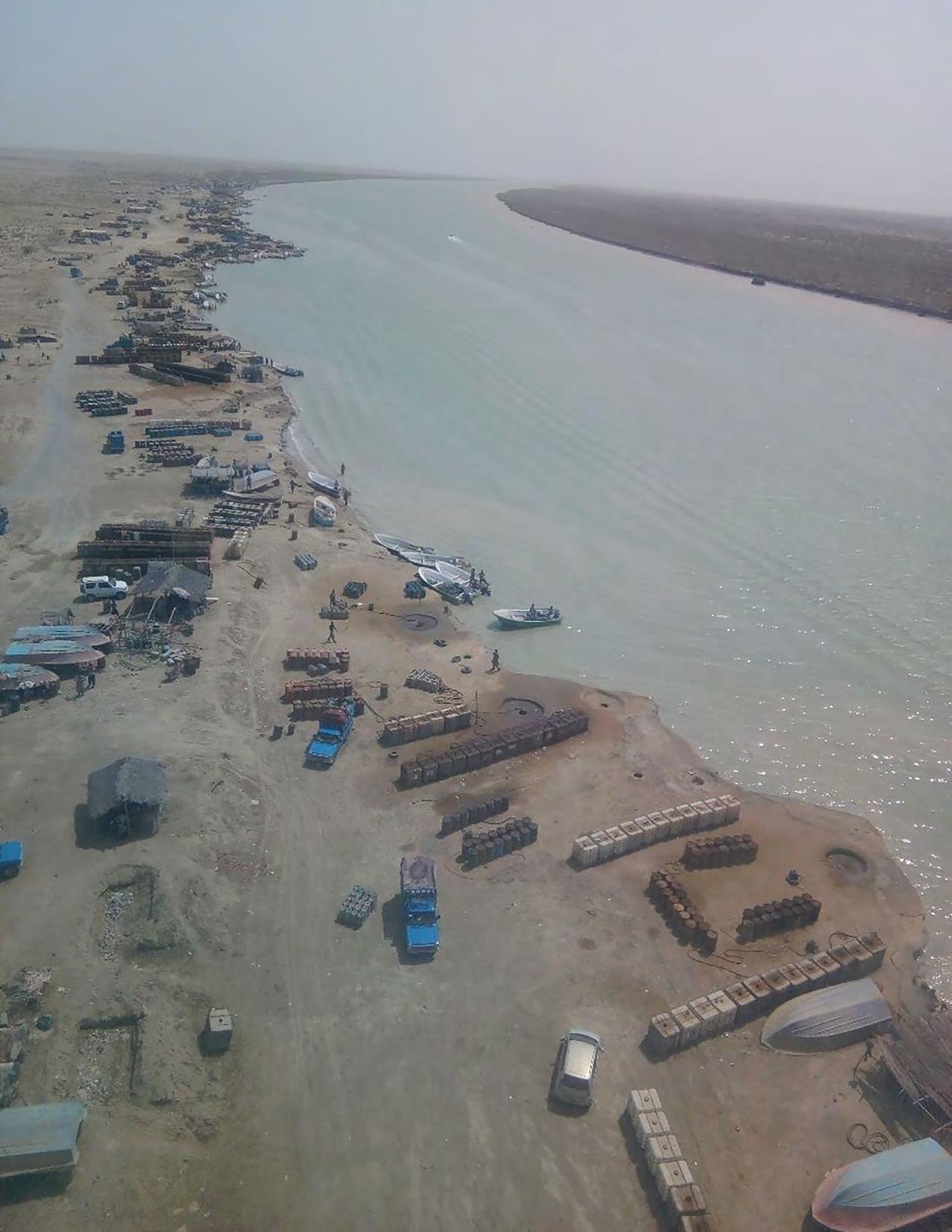
Over a 909-kilometre stretch of land along the Pakistan-Iran border, a small informal economy has developed around the art of smuggling. And while everything from Iranian snacks to crockery are illegally transported along the Gabd-Rimdan line, the most precious commodity is petrol.
The smuggling of petroleum products into Balochistan from Iran has long been a practice that has left Balochistan’s fuel economy relatively free from the shocks of the rest of the country’s fuel economy. The region of Balochistan extends into Iran, and the neighbouring country has a small province by the same name. The border is largely barren and sparsely populated and the common culture between people on either side of the border makes it extremely difficult to impose strict border regulations. Hundreds of thousands if not millions are involved in this illicit trade.
And that has made this stretch of land into a Wild-West story. From small speed boats carrying diesel across the sea-route to experts on Toyota four-wheelers and motorcycles carrying canisters of petrol across the rough terrain with precision and circus-like acrobatics there is a whole different world out there.
And its effects on Pakistan’s economy have been devastating.
In Profit’s investigation on the matter, very little information is available in the public domain. For the most part the matter is kept under wraps due to a range of factors that are going to be discussed later in the article.
For now let us focus on how diesel smuggling works.
Profit was able to get in touch with a person of interest directly involved in the smuggling trait, Jahngir Baloch*. According to him there are four primary routes being utilised by local smugglers. Out of these four routes, three are categorised to be illegal, whereas one of the routes is considered to be ‘relatively legal’, for the lack of a better expression, as there is oversight from the Frontier Constabulary (FC).
Going into detail on the routes starting from the coastline, one of the most easily accessible smuggling routes is interestingly enough from the sea. Small speed boats carrying diesel are used along this route coming from around the Iranian city of Chabahar to Jiwani in Balochistan.
This route is largely preferred by smugglers due to unit economics, as a boat is generally more efficient than traditional land routes.
The second major route preferred for smuggling of diesel up north from Jiwani is west of Panjgur lake, from Kuhak in Iran towards Washap in Balochistan. This route along with the sea-based route primarily divert supplies through southern Balochistan into Sindh.
The third route between Jalg in Iran and Joudar in Balochistan is relatively near the second route. The existence of this route is due to the mountain range stretching from Iran into Pakistan and practically dividing the border in this area. The town of Jalg is north of the Kuhak village.
The fourth route is located near the small town of Mashkel in Balochistan and Ratuk in Iran, south of the RCD lake. This route is largely overseen by the FC, and therefore, according to Jahngir the entry of smuggling vehicles is allowed for the most part through an established weekly token system.
Over the recent years, especially with a spike in global oil prices, smuggling of Iranian diesel has drastically increased. A senior source in the government, at the start of this year, told Profit that “smuggling of Iranian diesel has also increased drastically…[it] can be found up north as far as Gujranwala currently”.
If that diesel was smuggled into Jiwani, Balochistan, that would make it a 1981-km journey going through Sindh, or a 2005-km journey going through Quetta. This journey would take anyone between two to three days from the point it entered Pakistan to where it was sold.
This is directly indicative of higher volumes being smuggled into Pakistan, Jahngir told Profit that the smuggling business has been booming recently. When asked about the volumes that were being smuggled each day, his response was “nearly 2.5 million litres per day”.
Using a little bit of basic mathematics and estimations, a total volume of nearly 77.5 million litres is smuggled in from Iran every month. According to data published by the Oil Companies Advisory Council (OCAC), the volume of diesel consumed in Pakistan was 746.37 million litres in the month of December.
If the figures provided by Jahngir are accurate then smuggled diesel made up nearly 10.4% of the total diesel consumed in the month of December.
These figures give an idea of the scale of smuggling operations in Balochistan. While talking to Profit, the smuggler also explained how these numbers have been estimated. Based on his experience in the smuggling
business, a single Zambat (vehicles used in smuggling) can carry up to 4,200 litres of fuel per trip.
Now according to Jahngir an average of 150 vehicles cross the border into Pakistan each day at any given major route mentioned above. To gauge a rough estimate on the overall scale of smuggling operations, multiply the number of vehicles by the number of major routes that would give a total of 600 vehicles each day, multiplied by the number of litres each vehicle can carry we arrive at a total of 2.5 million litres per day.
We’ve determined where the diesel is smuggled into Pakistan from Iran, and we have an idea of how much volume is smuggled in each day, the next question would be what are the costs that make this business so lucrative?
“We get a wholesale price of about Rs 80-90 on diesel in Iran, but it can vary depending upon different factors,” said Jahngir while talking to Profit, “it is however generally cheaper and consistent”.
Comparing that to the refinery price of diesel at Rs 221 per litre, published by Ogra at the start of February, the difference is very prominent. The smuggler also explained that the rate going in the wholesale markets of Balochistan for Iranian diesel is around Rs 150 per litre yielding a difference of Rs 70 per litre.
No wonder thousands of people in Balochistan find their way into the smuggling trade.
A simplified calculation can be made of how much a smuggler is able to earn per trip. Adding on Rs 40 as the cost of smuggling which includes bribes and fuel costs would make the cost per litre at Rs 120-130 per litre once it has entered Pakistan.
The difference between the wholesale rate of Iranian diesel in Balochistan and the cost of bringing that diesel into Pakistan is about Rs 30-40 per litre, which is basically the profit earned by smugglers. Multiplying this by the total volume being smuggled, we arrive at a figure of Rs 3 billion per month in revenues for smugglers. If we were to annualise this we get a number of Rs 36.3 billion.
These figures paint a picture of how Iranian fuel smuggling has ingrained itself
“Smuggling from Iran is a curse for Pakistan”
Dr Nazir Abbasi
into the provincial economy of Balochistan as well as the national economy. But, given the scale of the operations there’s another important question that needs to be answered, how are payments made given the fact that Iran is under horrendous sanctions?
To understand why this is a major concern, we must first understand the brief history of sanctions on Iran. In 1979 when Iranian students took hostages from the American embassy in Tehran, the country’s imports to the United States were banned and $12 billion in Iranian assets were also frozen among other sanctions.
From thereon out, sanctions and restrictions on dealing with the Iranian economy have been snowballing and have compounded over the years to cover all the major aspects of Iran’s economy. Now these sanctions restrict business with Iran in all forms, that includes banking and payments into the country. To counter this, smugglers rely on the age-old method of “Hawala” to transfer funds from Pakistan to Iran without really transferring the funds.
Hawala is an informal means of exchanging money in which no tangible money is moved. It’s referred to as a money transfer with no money movement. Hawala is now employed as a remittance conduit that exists outside of established banking institutions. Because the system is mainly founded on confidence and the balance of hawala brokers’ records, transactions between hawala brokers are made without promissory documents.
Similarly, in the case of Iranian diesel this method is used to place orders and transfer money between the two countries. This is aided by the fact that the communities between the two countries are very similar and members of the same family live on both sides of the border at times.
According to Jahngir, this is the only method through which guarantee of payments is ensured. “Legitimate businesses like petrol pumps and restaurants in Pakistan act
as brokers for payments and placing orders for diesel in Iran.” Jahngir further added that “usually members of the family handle these orders and payments from both sides of the border.”
The obvious drawback of smuggling is the loss of revenue for the government. At the moment there is a 10% customs duty, this would roughly yield a revenue loss in the range of Rs 7.2 billion annually. Even though these are crude and rough estimations it’s still a huge amount of money.
And this only accounts for the loss in revenues based on customs duty at a rate of 10% on the wholesale rate of diesel in Iran for simplicity, adding on the loss of petroleum levy, increases the loss in revenue two fold. Multiplying the total volume by the petroleum levy imposed on each litre would render an amount of nearly Rs 3 billion lost each month.
Adding up the loss of revenue based on these calculations, the government is missing out on approximately Rs 43 billion. These concerns are also shared by officials in the FBR, according to which smuggling between Pakistan and Iran is valued at approximately $ 2 billion.
This impact on the loss of revenue is on top of the fact that the smuggling generates massive irregularities in the market for the existing companies. Local market economic transactions will dwindle as more people prefer smuggled items since they are cheaper. As a result, competition and economic progress are undermined.
Furthermore, according to an anonymous government official serving in Balochistan, smuggling also has a huge impact on the labour force of the province. “The smuggling business discourages the local population from participating in legal job opportunities which generally pay less as compared to smuggling,” the official added.
When questioned about the “legal job opportunities,” he gave the example of
border fencing being done by the military and in some regions by civil contractors. “As per the conditions imposed on the contractors, they had to employ locals for carrying out the fencing, after a few months of back and forth the contractors pulled out citing lack of willing and able labour in the region.”
The accuracy of these claims are difficult to determine, however, it does point out chronic issues caused by excessive smuggling of goods across the border. According to Dr Nazir Abbas Zaidi, Secretary General of the OCAC, “smuggling from Iran is a curse for Pakistan”.
Zaidi further went on to add that the quality of the fuel being smuggled in from Iran is not up to par with the domestic standards of Pakistan in terms of the Real Octane Number (RON) of the fuel. This means that even though the fuel is cheaper for the user, in the long run the cost of getting cheaper lower quality fuel will be balanced out by higher maintenance costs and deterioration of the vehicle’s engine in general.
Apart from damaging the engine and other mechanical parts in the vehicle, the burning of fuel has a higher impact on the environment as well. This is explained by the fact that Iranian fuel has very low RON.
In case you missed it, the Imran Khan government did carry out an extensive “crackdown” on the smuggling of Iranian fuel into Pakistan. Considering the fact that smuggling is still rampant across the western borders, it is safe to say that the crackdown on smuggling was a bust for the most part.
According to officials in the Pakistan Customs department, seizures of these smuggled items is a daily occurance, however, corruption and bribery is rampant and therefore, very hard to crack down on.
Sources on the condition of anonymity in the customs department also shared infor -

It should be allowed, and not just the oil: many things of comparatively better quality make their way to Balochistan because they’re coming in from Iran. Instead of banning or preventing trade in these goods, they should be taxed, especially the oil and edible items
Dr. Qaisar Bengali
mation about the crackdown on smuggling with Profit. According to these reports, from the start of this year approximately 50,000 litres of smuggled diesel was confiscated in Gwadar, 100,000 litres of petroleum products in Quetta, a further 100,000 litres in Hyderabad and approximately 45,000 litres of diesel along with 20,000 litres of oil were confiscated in Multan since November of last year.
Adding to this tally, on February 16, customs agents conducted a raid near Hyderabad and confiscated a tanker carrying 20,000 litres of Iranian diesel. This gives an idea of how chronic the issue of Iranian smuggling has become in Pakistan.
However, on the condition of anonymity sources have told Profit that the initial and momentary gains claimed to have been made from the crackdown of 2021 could not be translated into a meaningful and sustained deterrence against the smuggling of petroleum.
Further adding to this the source stated that instead of adopting preventive and much more effective strategies to eradicate the smuggling of petroleum, FBR officers
chose to label the owners and operators of the unauthorised petroleum outlets as smugglers in the crackdown of 2021, charged them primarily with the violations of petroleum laws but, interestingly presented them before the courts for proceedings and punishment under the custom laws.
Surprisingly, though customs adjudicating officers have reportedly dismissed a majority of the cases made by different customs collectorates under the direction and supervision of the then member custom operations during the course of FBR’s crackdown against the smuggling of petroleum into Pakistan.
Dr. Kaiser Bengali, a senior economist, has also expressed his thoughts on the subject. “It should be allowed, and not just the oil: many things of comparatively better quality make their way to Balochistan because they’re coming in from Iran. Instead of banning or preventing trade in these goods, they should be taxed, especially the oil and edible items”.
According to some estimates, up to 2.2 million people in Balochistan are directly dependent on oil smuggling due to a lack
of suitable economic options in the volatile region. On the ground, with such a huge portion of Balochistan’s people reliant on smuggling it would be difficult to crack down on.

The situation is further aggravated by the terrorist activities of different non-state actors operating in the region, this includes the infamous Islamic State who in 2021 claimed responsibility for killing 11 coal miners in the province.
If the country cracks down on the smuggling trade the relatively poorer segment of people involved in these illicit activities will be affected the most, the drivers, the mechanics and local pit stop owners.
Without a viable alternative employment opportunity for these, cracking down on it might do more harm than good. The economic vulnerability of the local population can also then be exploited by terrorist organisations operating in the region who would then have a larger unemployed population to recruit from. n
Disclaimer: Names have been changed to to preserve the identity of the sources
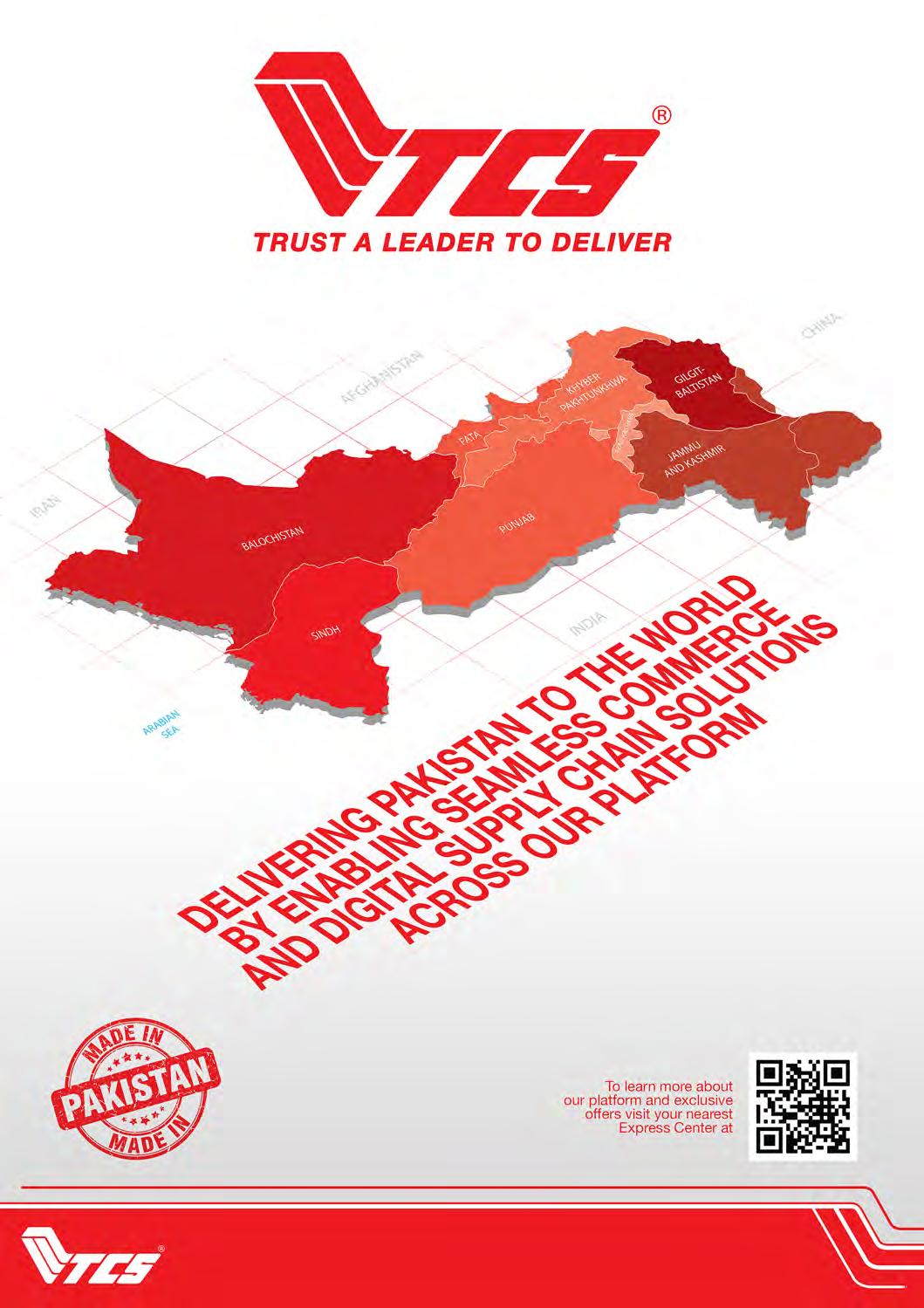
 By Nisma Riaz
By Nisma Riaz
Discourse. Ideally it is a word no one outside of college classrooms and leftist whatsapp groups should have to hear. Yet the debate that was generated around the opening of the first Time Hortons branch in Pakistan thrust the country’s social media warriors into a hotly contested battle for the soul of the city of Lahore.
Yet the debate was not about a large international chain opening and investing in Pakistan at a time of great economic uncertainty. Nor was it really about the wealth inequality that plagues this country’s economy. And despite what anyone might say, at the end of the day there was a simple question out there being posed: was it embarrassing for Lahoris to line-up in long, winding, queues to get their hands on a Tim Hortons coffee?
So what do we do with this question?
For starters, we must realise this is nothing new. Globalisation means that international franchises entering a country often results in spectacle. There were queues when McDonald’s opened its doors in Pakistan for the first time in the early 2000s and there were queues when Hardess first came here too. It isn’t so much about wanting the food as it is about induction into a particular cultural experience.
But is it worth waiting hours in line for? “If you study consumer behaviour, this seems quite routine. When something foreign and different is introduced in a market, people’s curiosity naturally draws them to try it. Not only this, but coffee is also considered an elitist beverage in Pakistan, so those who can afford it will be gravitated towards visiting a new coffeehouse,” explains Dr Rubina Feroz, a clinical psychologist and associate professor at the University of Karachi.
She mentioned how McDonald’s, which started as a trucker’s venture in America, gained similar traction when it first opened in Nazimabad, Karachi. People from DHA and Clifton, most of whom wouldn’t be caught dead anywhere near Nazimabad, were actually dressing up and waiting in long lines to go to McDonald’s.
Dr Noaman Ghazanfar Ali, Assistant Professor of Political Economy at the Lahore University of Management Sciences (LUMS), had something similar to say, “Even 10 years ago, when I was in Pakistan, people would dress up for McDonald’s, and it is perhaps, the only country where I have seen armed guards outside a McDonald’s.”
According to Ali, class psychology plays an important role here. “You can walk for 15 minutes and you get to a Tim Hortons in Canada. It is everywhere, especially in lower income neighbourhoods, which shows that it
is not considered quality food in its country of origin. People have a love for it because it is a very popular local franchise but no one in Canada would say that ‘Oh we want to eat quality food tonight, lets go to Tim’s’. The professional classes would go to Starbucks or Second Cup or this other place called Timothy’s.”
So, why then does it become a status symbol in our country, where only the elite can afford it? “It’s like Frantz Fanon says, our bourgeoisie is cosmopolitan yet deeply mediocre -- so it chases conspicuous consumption rather than actually developing economic sovereignty, an economy of our own under our own control. It’s a decadent economy that does not serve the needs of our country’s peoples but those of a narrow elite and international powers,” Ali explained.
The same was echoed by Dr Umair Javed, Associate Professor of Politics and Sociology at LUMS. “Some lines of critique highlight the fact that Tim Hortons is a brand that has a very different status value in Canada but it ends up being something entirely different here.” He explained that “A coffee shop for low- and middle-income individuals has become an elite status marker for us. Going to Tim Hortons in Pakistan means that you know what Tim Hortons is and that you have some connection to Canada or that you are aware that this thing exists in Canada.”
When I say aesthetic, I mean how jarring a visual would look like. We feel uneasy just looking at the contrast between two different income groups and what they value. Pakistan’s economy didn’t get crippled because people decided to line up outside Tim Hortons. It was already bad but when you witness an event like this, it doesn’t sit right with you
Dr Umair Javed, professor at LUMSThere are a few arguments that can explain the strong sentiment reflected in the backlash at Tim Hortons. First is simple; people want something to talk about. According to Feroz, “People react to anything that sizzles and in a poor country, such as Pakistan, so many people being able to afford overpriced coffee becomes an attractive topic to talk about.” From a psychologist’s point of view, Feroz believes that people just want to be noticed and the easiest way to do so is by engaging in a hot debate on social media. “Those who could not be present for the Tim Hortons launch participated in it by sharing their opinions about the event on Twitter. The more negative a debate is, the more attention it gets and this whole debate got people that attention.”
It would be unfair to chalk off other reasons by simply attributing the entire debate to human behaviour and our psychological need to be noticed. The issue is more nuanced than just wanting attention. In times of economic predicament, such as the present, when people are already feeling the heat of inflation and rapidly debilitating wealth, negative sentiments often overpower positive ones and rightfully so.
The entire Tim Hortons fiasco just adds fuel to the fire.
What was prominently highlighted by the entire online debate over this issue was the country’s economic position. On the one hand people are waiting in line to get subsidised flour bags, on the other hand a different strata of society is waiting for Rs 600 coffee to go with their equally overpriced croissant.
Javed believes that this is more of an aesthetic problem than a substantive one. “When I say aesthetic, I mean how jarring a visual would look like. We feel uneasy just looking at the contrast between two different income groups and what they value. Pakistan’s economy didn’t get crippled because people decided to line up outside Tim Hortons. It was already bad but when you witness an event like this, it doesn’t sit right with you.”
So, the problem is not people standing in line for coffee but how income and wealth inequality becomes apparent after such an event. It is easier to ignore the class divide on a regular basis but events, such as the opening of Tim Hortons, bring you face-to-face with these uncomfortable realities.

According to Ali, the launch points towards a larger issue, also explaining the backlash. “Those who live in androon (interior)
As per data available with the PBS, food inflation is over 42.9% this year and the CPI for January 2023, shows an average expenditure of 34.58% of the total income on food and non-alcoholic beverages. Keeping in mind that there is no real increment in people’s salaries, this percentage becomes considerably higher for labouring classes, as they end up spending a greater chunk of their meagre incomes on food. Ali also shared that according to the Pakistan Nutrition Humanitarian Overview, over 70% of Pakistani families are food insecure, meaning they are unsure where their next meal will come from
Lahore are the real Lahoris and they cannot even imagine going to a place like Tim Hortons, or McDonald’s or even local restaurants that are quite expensive. If anything comes out of this Twitter storm, I hope it is attention to inequality that exists in Pakistan.” As per data available with the PBS, food inflation is over 42.9% this year and the CPI for January 2023, shows an average expenditure of 34.58% of the total income on food and non-alcoholic beverages. Keeping in mind that there is no real increment in people’s salaries, this percentage becomes considerably higher for labouring classes, as they end up spending a greater chunk of their meagre incomes on food. Ali also shared that according to the Pakistan Nutrition Humanitarian Overview, over 70% of Pakistani families are food insecure, meaning they are unsure where their next meal will come from.
So, maybe Twitter’s reaction has less to do with people’s desperation to try Tim’s coffee, and is more so a function of people thinking conspicuous consumption is shameful, especially at a time like this when others are struggling to make ends meet.
“There’s enormous inaccessibility to affordable food; real wages are suppressed, people are lining up and fighting for subsidised flour, and in this sort of desperation you have got these line ups for Tim Hortons? This just shows the irrational allocation of resources in our economy thanks to this kind of free market, which is directly responsible for such inefficient allocation of scarce resources, rather than getting them where they are needed the most,” Ali explained.
Long story short, this is perhaps the worst time to mobilise outside an expensive coffee shop and draw more attention to your disposable incomes that the majority so severely lacks.
The number of people talking about Tim Hortons was probably larger than the amount of people standing outside it, waiting their turn to order. Within the

myriad Twitter debaters were also those who argued that the traction this coffeehouse has gained might be beneficial for attracting more foreign investment in the country.
“Yes, it can be argued that other foreign investors might notice the potential domestic market in Pakistan that they can capture, especially at a higher price point,” says Javed. He elaborated on how Tim Hortons is emblematic of the consumption patterns of people in Pakistan.
“The percentage that people spend on recreation and eating out is quite high across all income quintiles but it certainly becomes higher, the higher you go up the income bracket.” The CPI for recreation and culture, and restaurants and hotels combined is 8.51%. “Our economy is based on consumption, which is very well established by the economic data. We are a country of 231.4 million people and if you consider the income distribution to just the top 5%, who can afford to eat at foreign franchises, it makes up a population of over 11 million, which is a fairly big market,” he added.
However, Javed also highlighted a flaw in these consumption patterns, “Even if Tim Hortons does not create this condition of consumption, it still reflects that aspect of it, which has other implications for long-term growth and sustainability. However, it is not the responsibility of the people queuing for Tim Hortons to change this behaviour. The responsibility ultimately falls on the government to create policies that enable savings and investment.”
On the contrary, Ali believes that foreign investment from international fast food chains and restaurants is not the answer to the larger economic crisis that we find ourselves in. “Investment, such as Tim Hortons, requires very little capital, bringing no real or substantial money into the country. It might create a bunch of jobs but at very low levels, mostly at minimum wage. It’s not like they are driving skilling and technological upgrading in the economy. What we need right now is investment in transferring technology, which leads to technological upgrading and skilling that our population needs to be able to make higher value goods.”
“Here’s the secret; the poor are subsidising the rich in Pakistan. As embarrassing
as it is for an agricultural economy, billions of dollars worth of food is imported, and that means you’re paying for it in dollars. Dollars that we don’t have. So, we go to the IMF to ask for more dollars to pay our loans and imported commodities, which include pulses, palm oil, soy and even wheat. The IMF then imposes conditionalities, such as raising fuel prices, cutting government expenditure and raising taxes. These taxes are applied to the entire population in a generalised fashion, so the labouring classes end up paying disproportionately in taxes and in terms of income deflation, because the upper classes largely don’t pay taxes nor suffer serious income shocks.”
So, the worst part is that the hardworking, labouring classes, through their taxes, are paying for imported commodities that only the rich can afford. Foreign investment, such as Tim Hortons, might look beneficial for the economy on face value but these businesses require greater imports. This means more taxes paid by the working classes, who at the end of the day, gain nothing from it.
Moreover, Ali added that, “We don’t need more coffee shops in Pakistan. Our current investment pattern is one where most of the money goes into real estate or to banks, instead of factories or agricultural innovation that will be more productive, create more employment and sustain people’s livelihoods.” According to him, Pakistan’s current investment model is representative of an unproductive and decadent society, where consumption is directed not towards things that would benefit the overall population, but only the capitalists and upper sections of the petty bourgeoisie.
Ali explained how our economy is formally under our control but informally controlled by external forces, such as global inflation, since we rely on imports. Due to these conditions, we don’t have economic sovereignty, which basically makes Pakistan a semi-colony. “Tim Hortons is just a symbol, where we have this enormous maple leaf, which is the symbol of Canada, a country that literally got rich through genocide of indigenous people and we are so proudly going to have coffee like semi-colonial, mentally colonised subjects. There is a need to focus on do-
mestic investment and to use foreign investment more strategically and opening a Tim Hortons is simply not it,” he concluded.
It would seem appropriate then to replace asking whether Tim Hortons coming to Pakistan is good for our economy, with questions like what would it mean for us to have our own sovereign economy, one that is driven by domestic investment and savings instead of reliance on foreign investment?
Lastly, it was argued, quite vehemently by all and sundry, that people lack recreational avenues. In a country such as Pakistan, where there is not much to do for entertainment and where women cannot even visit parks, without risking their safety, eating out seems to be the only option. And while that might very well be true, it does not mean that we evade all responsibility. As much as we hate to acknowledge it, there are more pressing problems than lacking avenues for fun.
Ali seemed to be in agreement with this thought. “We need some self reflection. There are bigger issues than the rich lacking recreational avenues and entertainment outlets. This is not simply about the psychology of the rich, and their resultant behaviours, no one should care about that in individual terms alone. The problem is that we have this completely irrational political economic system in Pakistan that benefits the rich and exploits the labouring classes to keep them poor across many spectrums.”
If given the choice to pick a battle between the absence of entertainment and the scarcity of affordable food, which one would you choose? Elite consumption in Pakistan represents the physical repression of the working class power and simply the fact that we are able to advocate for better entertainment avenues, places us at a point of considerable privilege. So, the backlash at Tim Hortons was not sparked by people’s collective hatred towards the flamboyance of rich Lahoris, despite it seeming that way, but perhaps, due to a larger problem of the outrageous inequality it reflects. n
There’s enormous inaccessibility to affordable food; real wages are suppressed, people are lining up and fighting for subsidised flour, and in this sort of desperation you have got these line ups for Tim Hortons? This just shows the irrational allocation of resources in our economy

